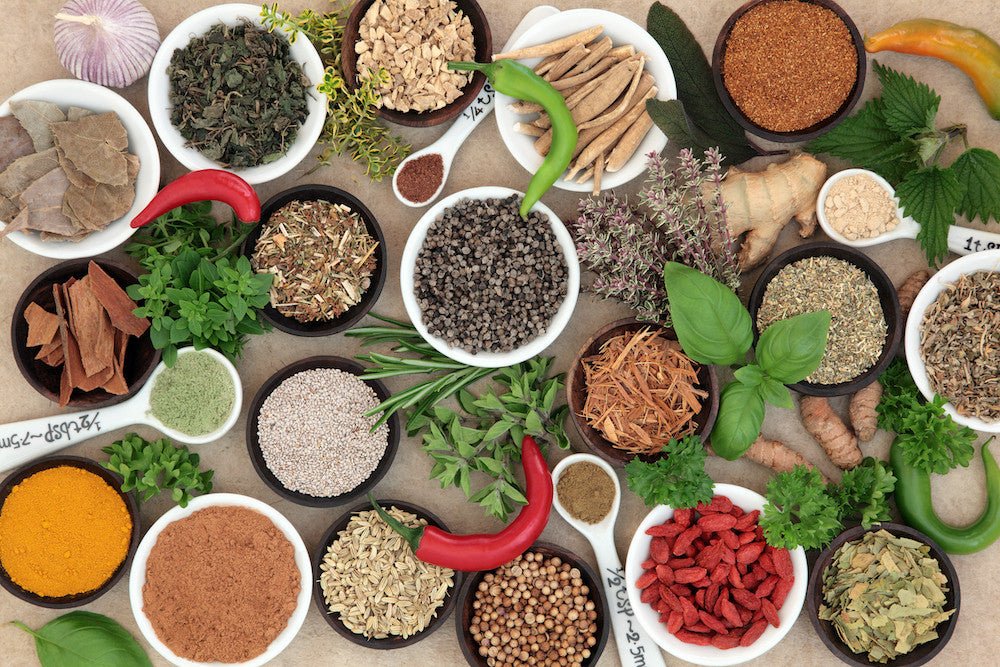Top 2017 Food Trends Predicted by Over 1,700 Dieticians
Posted on 10 January 2017

Predictions
The fifth annual "What's Trending in Nutrition" national food trend survey has been released after polling over 1,700 registered dietitians (RDs) across the country on next year's big trends in food and eating.
This year overall, results reveal a decline in consumers' interest in dieting. Instead, many are choosing clean and mindful eating as their path to healthier living. The survey is conducted by Pollock Communications and leading nutrition trade magazine, Today's Dietitian.
"Year-to-year, our unprecedented connection with Registered Dietitians – the real authorities on all matters of food and nutrition – has enabled us to document the movement towards mindful eating," said Mara Honicker, publisher of Today's Dietitian. "This annual increase in attention to eating with purpose and care is also reflected in the top 10 superfood trends. There has been a consistent focus on foods that are nutrient-rich – like seeds, avocados and nuts – along with those that have health-promoting qualities, like fermented foods and green tea."
Superfoods
Dietitians are attributing the latest shift in consumer food perception to the growing trend of "mindful eating," a slower and more thoughtful approach to eating. Based on the survey, 49 percent of RDs say that consumers will choose mindful eating over dieting. In addition, 59 percent say consumers will choose to "eat clean," by looking to consume foods that are less processed and more whole foods such as veggies, fruits, ancient grains and green tea, as well as plant-based proteins like nuts and seeds.
For the last five years, the What's Trending in Nutrition survey has been a leader in identifying and tracking the next significant trends in food for the upcoming year. In terms of what foods are still topping the coveted Top 10 Superfoods list, the survey shows that nuts and seeds still hold top spots, fermented foods take fourth place, and kale has lost some footing and continues to move down the list in comparison to previous years.
Top 10 Superfoods for 2017
1 Seeds, like chia and hemp
2 Avocado
3. Nuts, like almonds and walnuts
4. Fermented foods like yogurt
5 Ancient grains
6. Kale
8. Coconut products
9. Exotic fruits
10. Salmon
Food Transparency Has Eased Consumer Concern
Compared to 2016, dietitians report that consumers will be less concerned with the food trends of previous years, such as:
- Foods that are GMO-free, sustainable or gluten-free.
- GMO-free and sustainable foods have experienced on average a 20 percent decrease in terms of what concerns consumers. Dietitians attribute this decline to food label transparency and more food companies changing their ingredient deck. In contrast, consumers will be looking for more low-sodium and sugar-free options in 2017.
Top Tips from Registered Dietitians for Eating Healthier in 2017
The survey also captures RDs' top tips for how to eat healthier and make smarter purchasing decisions next year. Their best advice for consumers includes:
- Eating more servings of fruits and vegetables.
- Choosing high-quality, nutrient-rich foods in all food groups.
- Limiting consumption of highly processed foods.
- And instead of focusing on diets, RDs recommend choosing foods based on a wholesome ingredient list and high level of quality proteins and carbs.
In addition, each year, Choose MyPlate, the United States Department of Agriculture's guidelines for healthy eating (myplate.gov), continues to play an important role in nutrition education, with 80% of dietitians utilizing MyPlate as a tool to help consumers eat right-up from 76% last year.
Digital Fitness and the Home Delivery Age Help Consumers Make Better Food Choices
Technology has undoubtedly made shopping for healthier food and losing weight easier, and dietitians have noticed by unearthing these insights:
- 84% of RDs believe that technology is providing new options to help consumers make better food choices and/or eat healthier.
- New technologies are helping to shape the future of nutrition with 67% of RDs recommending apps, such as MyFitnessPal and the Fitbit App to plan and track food activity.
- Pre-portioned meal delivery services such as Blue Apron and Fresh Direct have also skyrocketed – 45% of consumers are now turning to these and similar healthy meal or weight loss menu delivery programs in order to eat healthier.
Not All Shopping Carts Are Created Equal – Barriers to Purchasing Healthy Foods
Although consumer awareness of healthy food has increased and mindful eating is on the rise in 2017, issues of access and cost continue to prevent certain populations from being able to eat and purchase healthy food.
- For low-income consumers, RDs say that cost, above all other factors including physical health, is the largest barrier when making food purchasing decisions. This often makes healthy eating options out of reach for low income families.
- RDs recommend increasing affordability and availability of nutritious food in low-income areas to help reduce barriers to healthy eating.
Source: www.smobserved.com



Connect With 5Greens